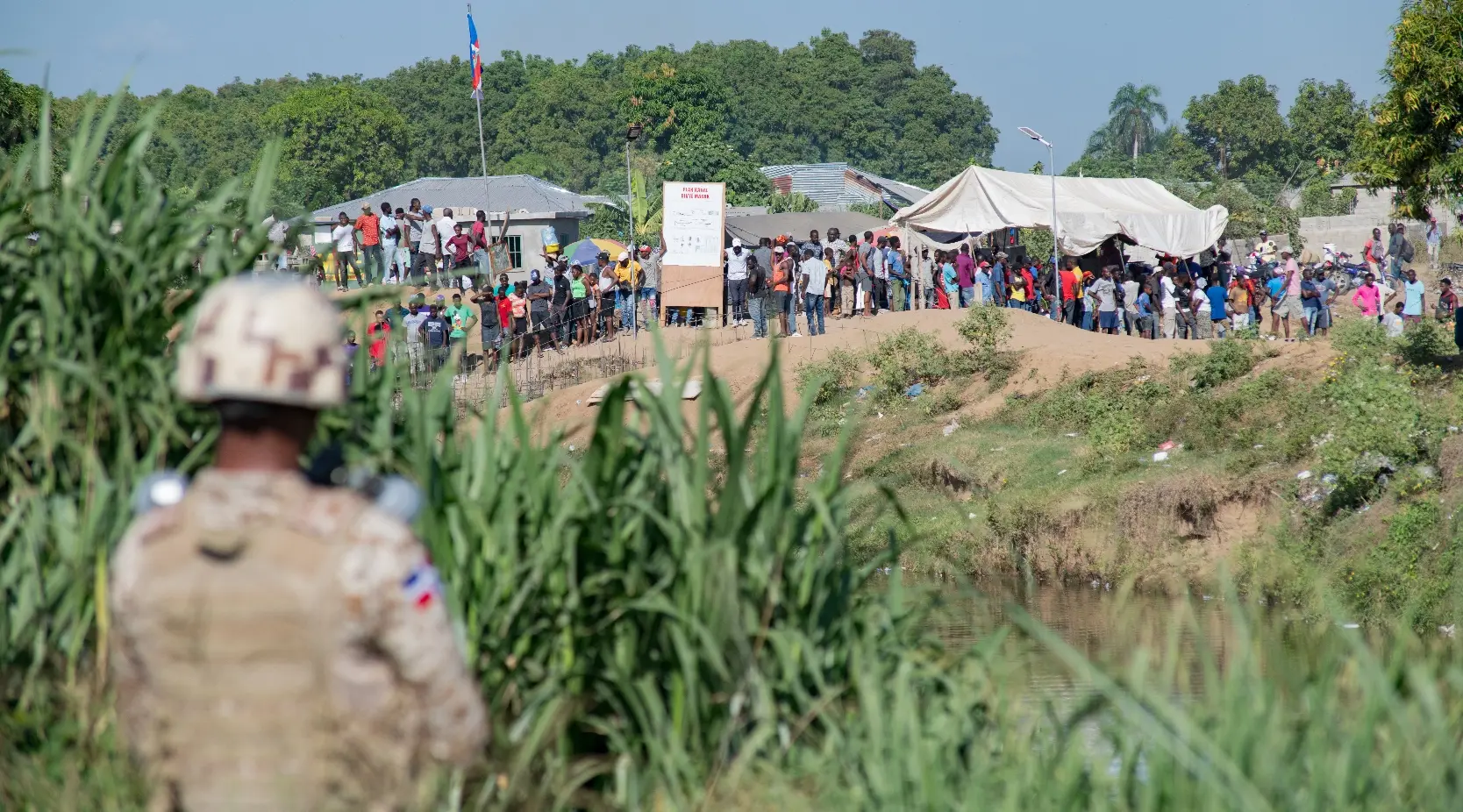
Distant in degrees of development and practice of democratic practices, the two nations of the island of Hispaniola have been at odds over an irrigation canal illegally connected to the Masacre River in collective desperation for water, a symbolic representation of the centuries-old thirst.
For justice, vandalism and ungovernability are intensifying against Haitians on the very borders of the country that suffers the consequences of its alarming backwardness in the social order.
A deeply rooted cross-border subordination with goods, services and jobs provided by Dominicans to the poor neighbor faces its worst threat.
The muscular ephebe who at the beginning of the week destroyed a pyramid of territorial delimitation near Dajabón with mandarin, was driven by the closure of the border and its logistical consequences against the impoverished inhabitants and by the revenge and illegitimacy of his laughable government.
A geographical area inferior to the neighboring Dominican Republic, which registers a GDP five times greater than that of the western territory, “halted in its collective progress by greater political and macroeconomic instability and lower investment in infrastructure and human capital with deterioration of quality of life, the environment” (data from the World Bank).
The International Development Association, sponsored by the World Bank, highlighted how unsuccessful are the critical historical and cultural similarities of both countries, which share everyday historical experiences, including colonial origins, American occupation and former autocratic regimes, such as those of Trujillo and Francoise Duvalier.
The ambivalent consequences, with a tendency for the worst, of the confinement of two contradictory societies on the same island were recently highlighted by the independent German magazine DW.
“While the Dominican Republic is one of the most popular (and successful) destinations in the Caribbean, Haiti is one of the poorest countries in the world.”
“In the Dominican Republic there is a reasonable road network (and other important infrastructure) that allows travel without major problems from one place to another. In Haiti, however, it takes many hours to travel a few kilometers.”
The UN found that only 50% of the Haitian population knows how to read and write, while 90% of their Dominican neighbors express themselves grammatically orally and in writing.
Accounts in disarray
Haiti’s Gross Domestic Product has had one of its worst enemies in the rampage of armed gangs.
Their actions caused it to fall 1.7% in 2021 compared to the previous year and last year, at one of the heights of banditry and the failure of institutions, the Haitian GDP was 19,234,000 euros, making its economy It was ranked 118th in the ranking.
Haitian unemployment is terrifying if you can believe that its measurement mechanisms can reflect the reality of its citizens.
On the other side of this legendary massacre of pedestrian crossings, the “Monthly Indicator of Economic Activity” of the Dominican Republic went from a level of US$8,583.1 in pre-pandemic 2021, a GDP per capita of US$10,732.9 in 2022 and is already approaches US$11,200 in 2023 with an encouraging year-on-year growth of 3.1%.
Weaknesses and dangers
A very recent report from the Economic Commission for Latin America and the Caribbean, ECLAC, admits that the levels of poverty and inequality in the Dominican Republic have been significantly reduced in the last 30 years, although they are still high.
Based on these weaknesses and insufficiencies pointed out by ECLAC, the crisis in Haiti tends to have repercussions with many risks for the DR.
It is the destination country for the second largest flow of Dominican exports, a commercial conquest against which powerful internal interests turn, almost with hatred, to fight against the interdependence of the island.
“In Haiti it seems that there are political and economic forces interested in a confrontation with the Dominican Republic. The provocations have been present since the beginning of the construction of the canal.”
